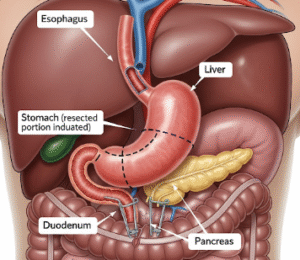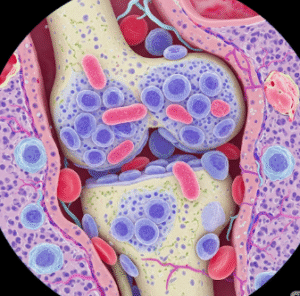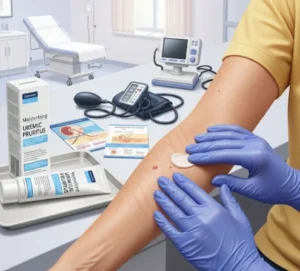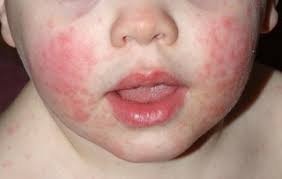Overview
Toxic Shock Syndrome (TSS) is a rare, life-threatening condition caused by bacterial toxins, most commonly from Staphylococcus aureus or Streptococcus pyogenes. It can develop rapidly, leading to high fever, hypotension, multi-organ dysfunction, and, in severe cases, death. TSS gained attention initially in the 1980s due to cases associated with tampon use, but it can also result from surgical wounds, burns, skin infections, or other invasive infections. South Korea provides advanced critical care and infectious disease management for TSS, including early diagnosis, intensive monitoring, antimicrobial therapy, and supportive care in specialized hospital units to optimize patient outcomes.
What is Toxic Shock Syndrome?
Toxic Shock Syndrome is a systemic condition triggered by bacterial toxins acting as superantigens, which overstimulate the immune system. This immune overreaction causes widespread inflammation, capillary leak, and organ dysfunction. TSS is categorized into two main types:
- Staphylococcal TSS: Often associated with tampon use, post-surgical wounds, or skin infections; typically caused by Staphylococcus aureus producing toxic shock syndrome toxin-1 (TSST-1)
- Streptococcal TSS: Usually linked to invasive Streptococcus pyogenes infections; characterized by rapid onset, severe tissue damage, and higher mortality
The condition can progress quickly, making early recognition and intervention critical for survival. South Korean hospitals employ multidisciplinary teams, including infectious disease specialists, critical care physicians, and surgeons, for comprehensive management.
Symptoms
TSS presents with sudden and severe systemic and localized symptoms:
- High fever: Often above 38.9°C (102°F)
- Hypotension: Low blood pressure leading to dizziness or fainting
- Rash: Diffuse, red, sunburn-like rash, often involving palms and soles
- Desquamation: Skin peeling, particularly on hands and feet, occurring 1–2 weeks after onset
- Gastrointestinal symptoms: Nausea, vomiting, diarrhea, and abdominal pain
- Muscle aches: Myalgia or generalized body pain
- Confusion or altered mental status: Due to reduced perfusion and systemic inflammation
- Multi-organ involvement: Kidney, liver, or cardiovascular dysfunction in severe cases
Rapid identification of these symptoms in Korean hospitals allows for immediate life-saving interventions.
Causes
TSS results from bacterial infection and the release of toxins:
- Bacterial sources: Staphylococcus aureus and Streptococcus pyogenes
- Tampon or menstrual products: High-absorbency tampons can promote bacterial growth in rare cases
- Surgical or wound infections: Postoperative or burn wounds can be entry points for bacteria
- Skin infections or cellulitis: Bacterial invasion through cuts, abrasions, or dermatitis
- Other invasive infections: Including abscesses, postpartum infections, or osteomyelitis
The toxins act as superantigens, causing massive immune activation, capillary leak, hypotension, and organ dysfunction.
Risk Factors
Certain individuals are more susceptible to developing TSS:
- Use of high-absorbency tampons or prolonged tampon use
- Recent surgical procedures, burns, or skin injuries
- Chronic skin conditions or compromised skin integrity
- History of invasive bacterial infections
- Immune system compromise due to chronic illness or medications
- Postpartum or post-abortion status
Identifying risk factors allows healthcare providers in Korea to implement preventive measures and monitor at-risk patients closely.
Complications
TSS can progress rapidly to severe, life-threatening complications:
- Shock: Due to widespread capillary leakage and hypotension
- Multi-organ failure: Including kidney, liver, heart, and lungs
- Disseminated intravascular coagulation (DIC): Abnormal blood clotting and bleeding
- Sepsis: Widespread infection leading to systemic inflammatory response
- Death: Mortality rates are significant if treatment is delayed
- Long-term effects: Chronic kidney or liver dysfunction, limb ischemia in severe cases
Early recognition and intervention in Korea are critical to minimizing these complications and improving survival rates.
Prevention
Preventing TSS focuses on hygiene, awareness, and early medical intervention:
- Practice proper hand hygiene and wound care
- Promptly clean and treat cuts, burns, or surgical sites
- Avoid prolonged tampon use and change them regularly during menstruation
- Monitor for early signs of infection or rash following surgery or skin injury
- Educate patients on symptoms that require urgent medical attention
- Vaccinations or prophylactic antibiotics in specific high-risk surgical procedures may be considered
Public health education and hospital protocols in Korea reduce the incidence and severity of TSS.
Treatment Options in Korea
South Korea provides state-of-the-art management for TSS, combining critical care, infectious disease expertise, and multidisciplinary support:
Diagnosis:
- Clinical evaluation of fever, hypotension, rash, and organ involvement
- Laboratory tests: blood cultures, complete blood count, kidney and liver function, coagulation profile
- Imaging studies if a source of infection is suspected
- Identification of causative bacteria to guide antibiotic therapy
Medical Treatments:
- Immediate antibiotics: Broad-spectrum coverage initially, followed by targeted therapy once cultures are identified
- Intravenous fluids: Aggressive hydration to correct hypotension and maintain organ perfusion
- Vasopressors: To support blood pressure in cases of shock
- Supportive care: Oxygen therapy, renal replacement therapy if needed, and electrolyte correction
Surgical and Interventional Treatments:
- Drainage of abscesses or infected wounds
- Debridement of necrotic tissue in severe cases
- Burn or wound care in specialized units
Rehabilitation and Support:
- Close monitoring in intensive care units
- Nutritional support and physical therapy for recovery
- Patient education to prevent recurrence and recognize early warning signs
- Psychological support for trauma associated with critical illness
Korean hospitals provide integrated, evidence-based care to improve survival, restore organ function, and ensure comprehensive recovery for patients with Toxic Shock Syndrome.













